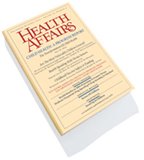
The
N.Y. Times reports today that the journal
Science has published an article [
abstract;
pdf (requires subscription)] in which British researchers performed a functional MRI (fMRI) scan on a post-traumatic-brain-injury patient diagnosed to be in a vegetative state and got back scans that would be indistinguishable from results obtained from subjects without brain injury. According to the
Times article:
A severely brain-damaged woman in an unresponsive, vegetative state showed clear signs on brain imaging tests that she was aware of herself and her surroundings, researchers are reporting today, in a finding that could have far-reaching consequences for how unconscious patients are cared for and how their conditions are diagnosed.
In response to commands, the patientÂ’s brain flared with activity, lighting the same language and movement-planning regions that are active when healthy people hear the commands. Previous studies had found similar activity in partly conscious patients, who occasionally respond to commands, but never before in someone who was totally unresponsive.
If the researchers' report is accurate, the patient may have met all clinical criteria for vegetative state but she didn't meet two criteria in the standarddefinitionn of vegetative state: "no evidence of awareness of self orenvironmentt and an inability to interact with others" and "no evidence of sustained, reproducible, purposeful, or voluntary behavioral responses to visual, auditory, tactile, or noxious stimuli."
Does this change anything we know about the vegetative state? Does this suggest there may be a need to redefine what we mean by vegetative state? I don't think so.
First, this is a report of a single patient. She may be the only brain-injured patient in the world with these results. Time will tell.
Second, it's possible that over 5 months' time her condition changed from vegetative to something between vegetative and the "minimally conscious state" -- that is, she's no longer vegetative despite outward ("clinical") signs that she is. Should this be a cause for concern that we are routinely misdiagnosing patients as vegetative when they're not? Not necessarily.
As best I can tell from the full text of the article, the fMRI test was performed 5 months after the traumatic brain injury occurred in July 2005. That's long enough to confirm a diagnosis of vegetative state, and even long enough to confirm a diagnosis of
persistent vegetative state, but it's a good 7 months shy of the
American Academy of Neurology's practice parameter's recommendation of 12 months to confirm a diagnosis of
permanent vegetative state after traumatic brain injury.
If the patient continues to meet the clinical criteria for the vegetative state 12 months after her traumatic brain injury
and the researchers can show evidence (in the words of their report) "which confirm[s] beyond any doubt that she was consciously aware of herself and her surroundings," that will be an impressive result, although still not enough all by itself to justify altering our present diagnostic criteria.
Meanwhile, I expect this report will be used by partisans in the
Schiavo debate to "prove" they were right about Terri Schiavo's mental status, despite irrefutable post-mortem evidence that her brain had atrophied more than 50% over the 15-year course of her vegetative state.
Science warned against such a misuse of this report in its press release yesterday, according to the
Times: "Science . . . added a 'special note' citing the Schiavo case and warning that the finding 'should not be used to generalize about all other patients in a vegetative state, particularly since each case may involve a different type of injury.'"
 From Modern Healthcare's Daily Dose:
From Modern Healthcare's Daily Dose:
















